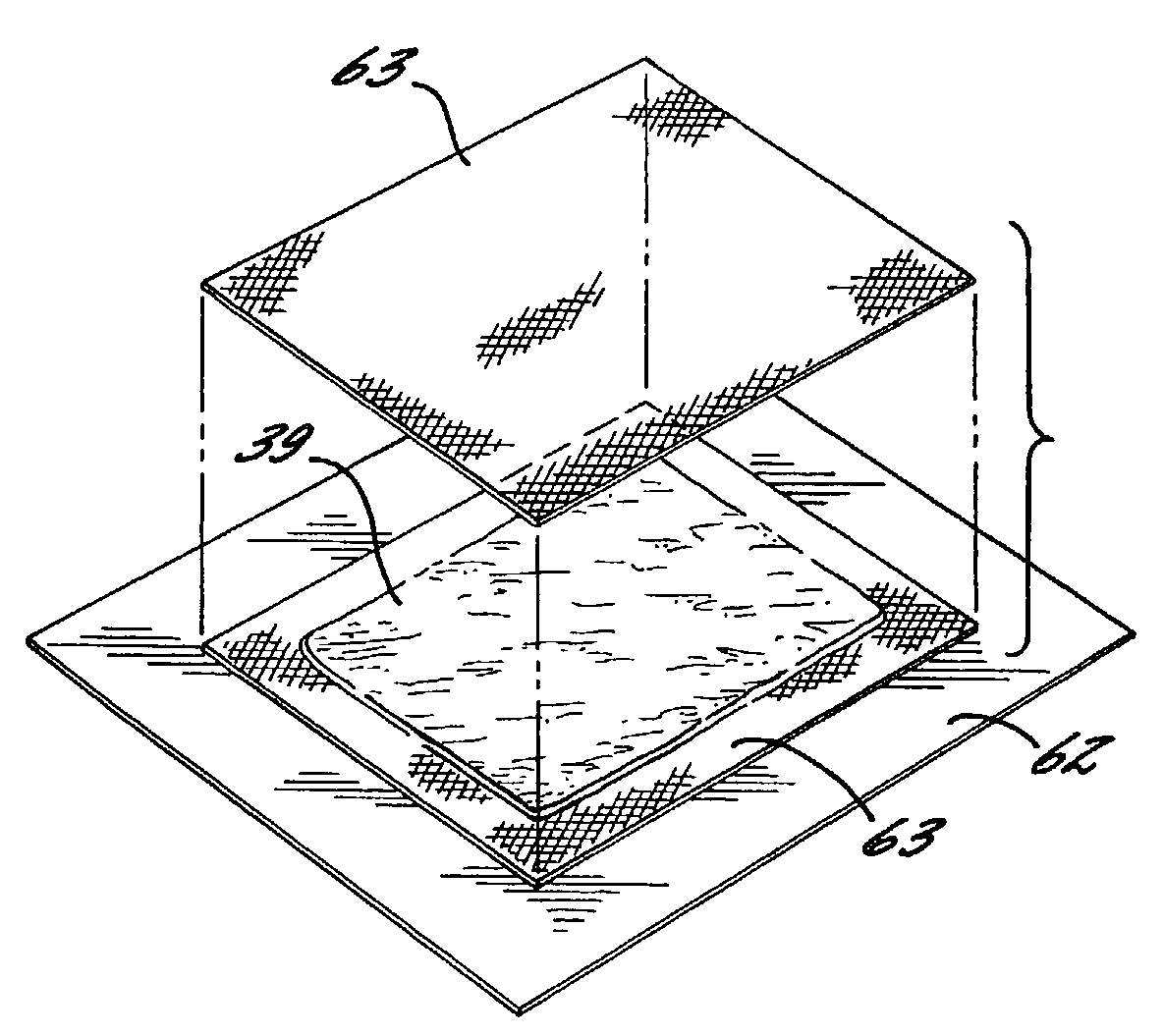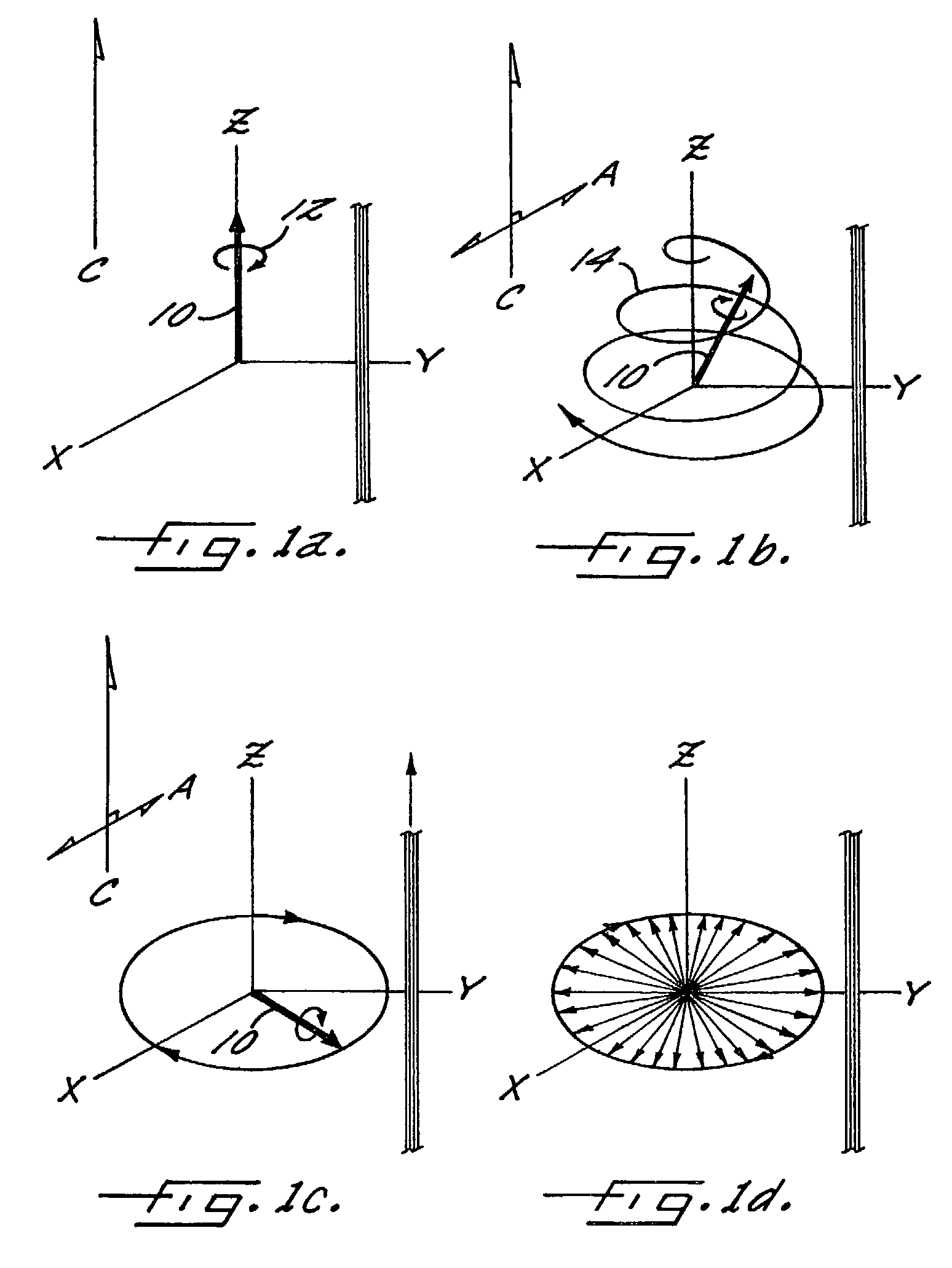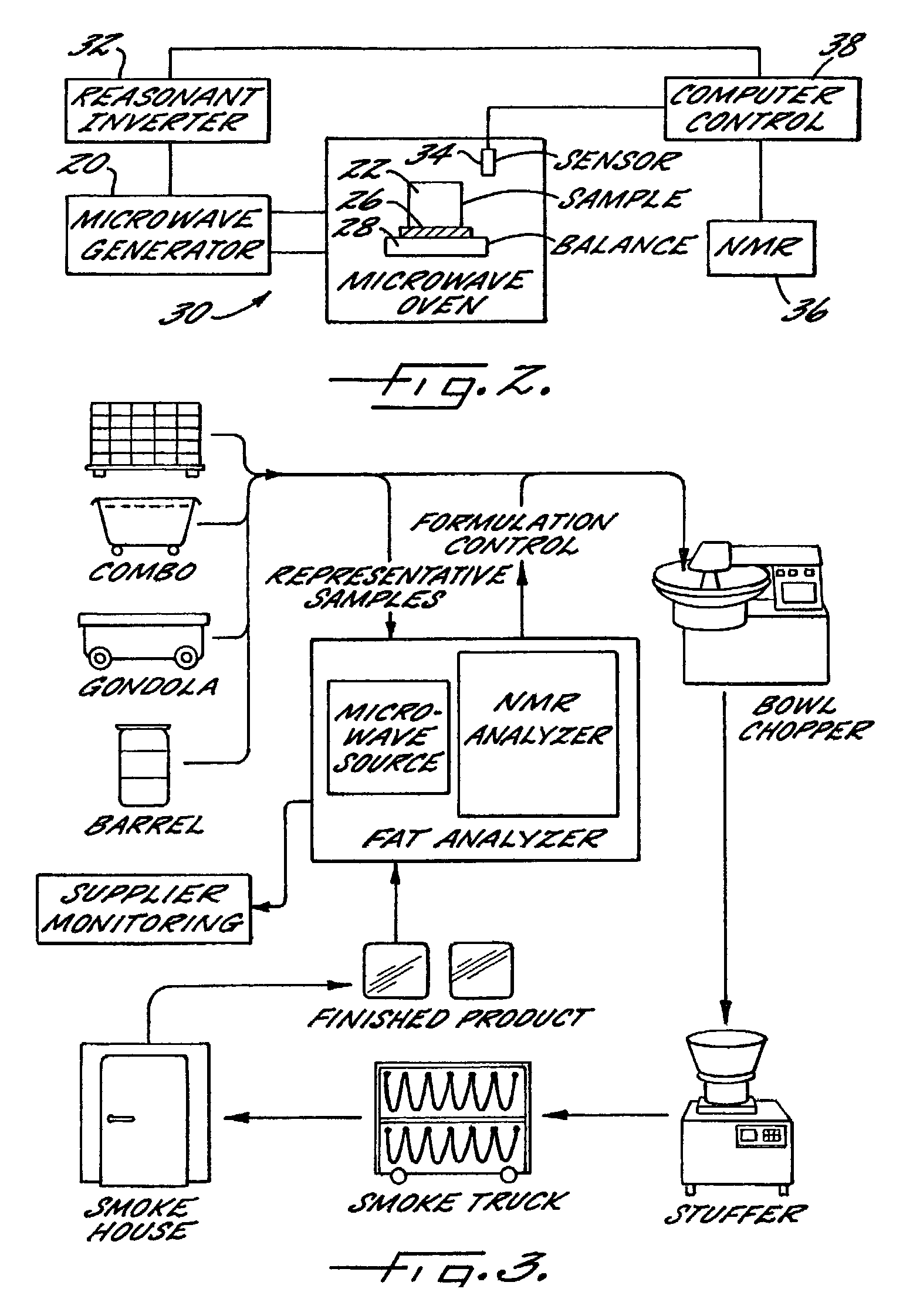Method and apparatus for rapid fat content determination
a fat content and fat content technology, applied in the field of chemical analysis using microwave assisted nuclear magnetic resonance, can solve the problems of preventing the optimal efficiency of production processes, affecting production economics, time-consuming traditional methods, etc., and achieve the effect of rapid and accurate determination of moisture conten
- Summary
- Abstract
- Description
- Claims
- Application Information
AI Technical Summary
Benefits of technology
Problems solved by technology
Method used
Image
Examples
Embodiment Construction
[0025]The invention is a method and apparatus for rapidly and accurately determining the fat and oil content of a sample that also contains moisture in amounts that would otherwise preclude NMR determination of the fat and oil content. To aid in the understanding of this invention it may be useful to briefly review the theory behind NMR. A classical electrodynamic theory of NMR is presented for the reader''s edification. Those skilled in the art, however, recognize that other theories of NMR, such as quantum mechanical theory, are also applicable. A detailed discussion of these theories, however, is not necessary to achieve an understanding of the preferred embodiments of the invention.
[0026]The nuclei of certain atoms possess a property called “spin.” This property is often visualized as a phenomenon similar to a spinning top made of a magnet. In other words, the nuclei of atoms possessing spin also possess an angular momentum and a magnetic moment. For purposes of this discussion ...
PUM
| Property | Measurement | Unit |
|---|---|---|
| frequencies | aaaaa | aaaaa |
| frequencies | aaaaa | aaaaa |
| wavelengths | aaaaa | aaaaa |
Abstract
Description
Claims
Application Information
 Login to View More
Login to View More - R&D
- Intellectual Property
- Life Sciences
- Materials
- Tech Scout
- Unparalleled Data Quality
- Higher Quality Content
- 60% Fewer Hallucinations
Browse by: Latest US Patents, China's latest patents, Technical Efficacy Thesaurus, Application Domain, Technology Topic, Popular Technical Reports.
© 2025 PatSnap. All rights reserved.Legal|Privacy policy|Modern Slavery Act Transparency Statement|Sitemap|About US| Contact US: help@patsnap.com



